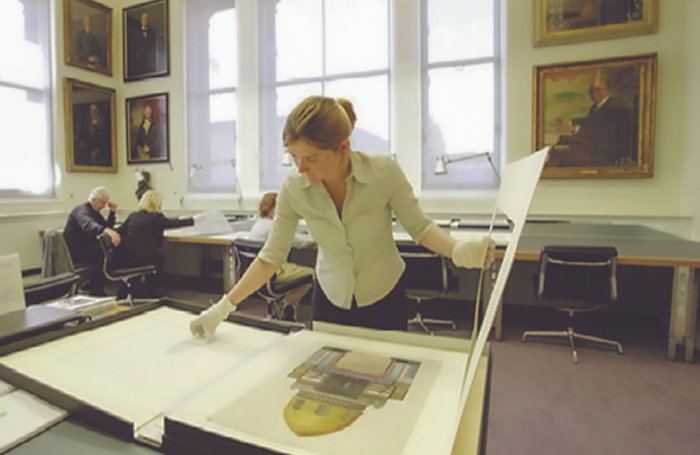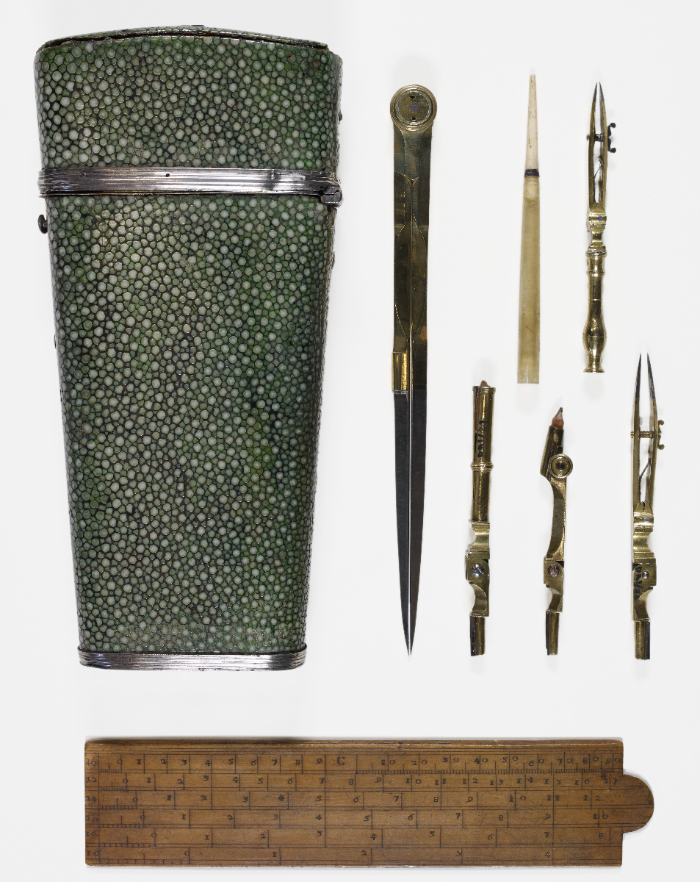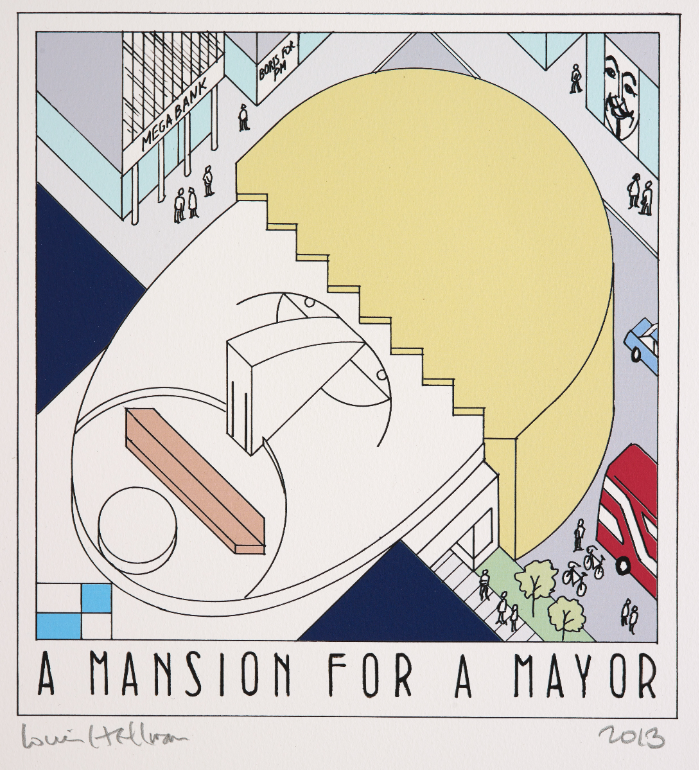Five things you need to know about the RIBA Collections
You might have heard that we look after a historic collection and a world-class architecture library – but why should you care? Here’s what you need to know about the RIBA Library and Collections.
1. They’re open to everyone, free
Anyone can come and see rare and historic objects in our collection, and there’s no charge.
If there’s something specific you want a close look at – whether for dissertation research, design inspiration, to help inform a conservation project, or just to satisfy your curiosity – you can book an appointment at our library at 66 Portland Place (London), where you'll find our books collections, including rare and early volumes, and photographs collection, or our study rooms at the Victoria & Albert Museum (London), where most of our drawings and archival material is kept. Here, our curators will get the object out from our stores for you so you can study it more closely.
Or if you want to browse some highlights, you can pay a visit to the Architecture Gallery at the Victoria & Albert Museum (V&A), where our collections are on display alongside those of the V&A, in a permanent gallery exploring the history of architecture, styles, materials, and building types. Or catch our programme of exhibitions featuring the collections.

2. 120,000 of them are digitised
Can’t make it to London? Our online image library, RIBApix, contains over 120,000 digital images from our collections – and is constantly growing as new items are digitised.
3. They feature just about every kind of object you can think of
Alongside the drawings, manuscripts, and photographs that you might expect, you’ll also find models, toys, paintings, busts, coins, medals, and building fragments. There are ID cards from the First World War, ancient coins from the time of the Roman Empire, recordings of historic lectures, a briefcase once belonging to Denys Lasdun, and a stuffed squirrel (really).
These objects tell us not just about buildings and the people who designed them, but also the historical contexts in which they were conceived, built, and occupied.

4. They're constantly growing
We’re acquiring new things into our collections all the time. Entire practice archives often come to us when an architectural practice is wound down. Sometimes, the relatives of famous architects will find a trove of material during an attic clear out, and we’ll swoop in to safeguard it for future generations. We also buy things at auction, particularly if there’s an important architect or building that's not yet represented in our collections.

5. They tour the world
Items from our collections have recently appeared in New York, Vicenza, and the Isle of Bute. They get loaned to some of the world’s most-visited museums for blockbuster exhibitions, like Raphael and British Baroque. Every time an item goes out on loan, our team carries out necessary conservation work and oversees the transportation and installation of the object to make sure it’s protected.
Ready to find out more? Here's everything you need to know about accessing and exploring the RIBA Collections.






